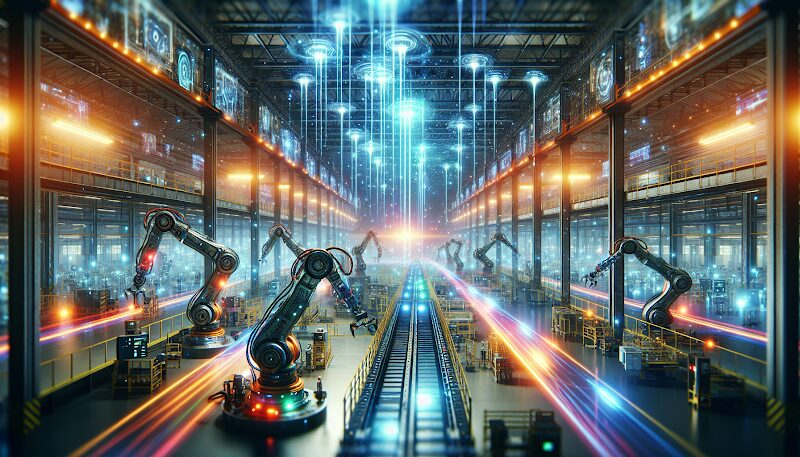As a pioneer in industrial automation solutions, EWAB specializes in advanced manufacturing technologies, including conveyor systems, robotic cell integration and customized loading/unloading equipment. Their proven track record in delivering seamlessly integrated, high-performance solutions has made them particularly valuable to precision-driven sectors like the automotive industry. This expertise provides an ideal foundation for exploring how OTA updates can elevate automated manufacturing systems to new heights of efficiency.
In today’s rapidly advancing industrial landscape, automation is a necessity. As factories and production lines adopt advanced technologies, smart systems to connect machines become increasingly vital. One such advancement is the implementation of OTA updates in robotics, which offers a flexible flow of information and capabilities. If interested, you can read more about pallet conveyor systems as part of this evolving automation ecosystem.
OTA Updates in Robotics
OTA updates are mechanisms that allow software improvements to be delivered wirelessly to devices such as robots. This approach not only saves time but also ensures that machines remain updated with the latest features without manual intervention. In the realm of industrial automation, these updates play a pivotal role in enhancing material flow and optimizing system performance.
Among the notable benefits of OTA updates is their ability to continuously improve the functionality and intelligence of robotic systems. By enabling real-time enhancements, companies can ensure that their machinery operates at peak efficiency. This constant evolution is particularly important in industries where up-time is critical to maintaining productivity.
The seamless nature of OTA updates aligns perfectly with EWAB’s focus on providing reliable automation solutions. By integrating these updates into existing systems, businesses can experience enhanced efficiency and connectivity across their production lines.
Impact on Robotics Intelligence
OTA updates significantly contribute to the intelligence of robotic systems by introducing new capabilities that were previously unattainable. For instance, robots can be programmed to learn from their environment and adapt to changes in real-time. This adaptability leads to more efficient operations and reduces downtime caused by unexpected events.
One example is the ability for robots to optimize their tasks based on data collected from their surroundings. This capability not only enhances productivity but also ensures that resources are utilized more effectively. As a result, industries can achieve a higher return on investment in their automation technologies.
The ongoing advancements in OTA technology suggest that future robots will continue to grow smarter, offering even greater benefits to industries that rely on automated systems.
Practical Applications in Industry
Industries across various sectors are already benefiting from OTA updates. For example, automotive manufacturers have integrated these updates into their production lines, leading to improved quality control and faster response times to market demands.
The integration of these updates with existing systems is proving to be seamless, offering an effortless transition for industries looking to modernize their operations.
The compatibility of OTA technology with pallet conveyor system implementations further underscores its relevance in modern manufacturing environments. By streamlining processes and ensuring continuous improvement, businesses can maintain a competitive edge while maximizing up-time across their operations.
Challenges and Considerations
Despite the numerous advantages, implementing OTA updates does come with challenges. One major concern is ensuring the security and integrity of data being transmitted wirelessly. Industries must invest in robust cybersecurity measures to protect sensitive information from potential breaches.
Another consideration is the need for reliable infrastructure to support seamless updates across all devices within a production facility. Companies must evaluate their current systems and make necessary upgrades to accommodate this new technology effectively.
By addressing these challenges head-on, industries can fully leverage the potential of OTA updates while safeguarding against potential risks.
The Future of Industrial Automation with OTA
The future of industrial automation looks promising with the continued evolution of OTA technology. As more industries adopt these updates and implement smart systems to connect machines, we can expect further innovations that will enhance productivity and reduce operational costs while maintaining optimal up-time.
Continuous updates will play a crucial role in advancing robotics technology by enabling machines to perform increasingly complex tasks with precision and accuracy. This trend is set to redefine how industries approach automation and create new opportunities for growth.
As you consider how your business can benefit from these advancements, it’s essential to stay informed about the latest developments in OTA technology and their implications for your industry.





























